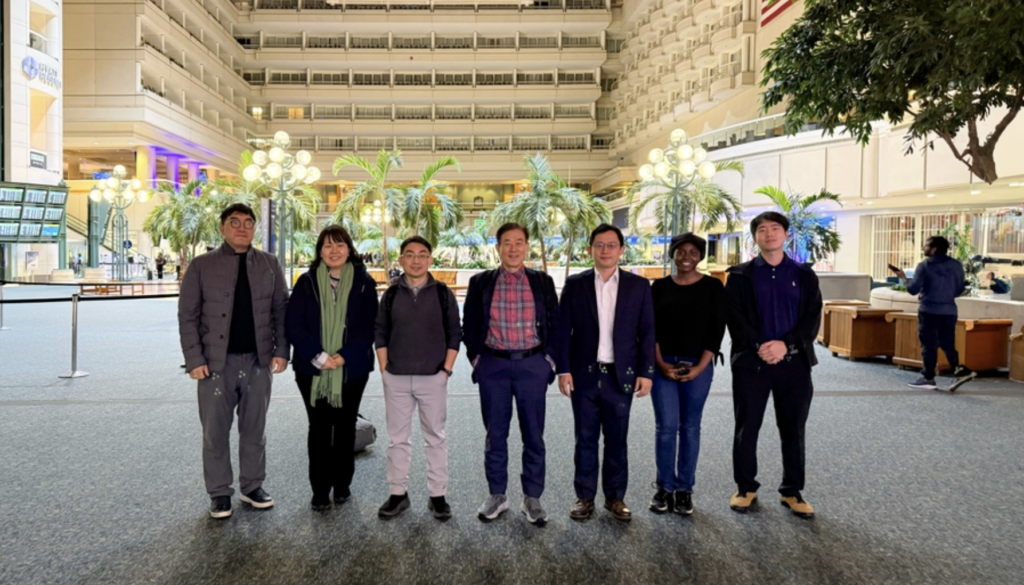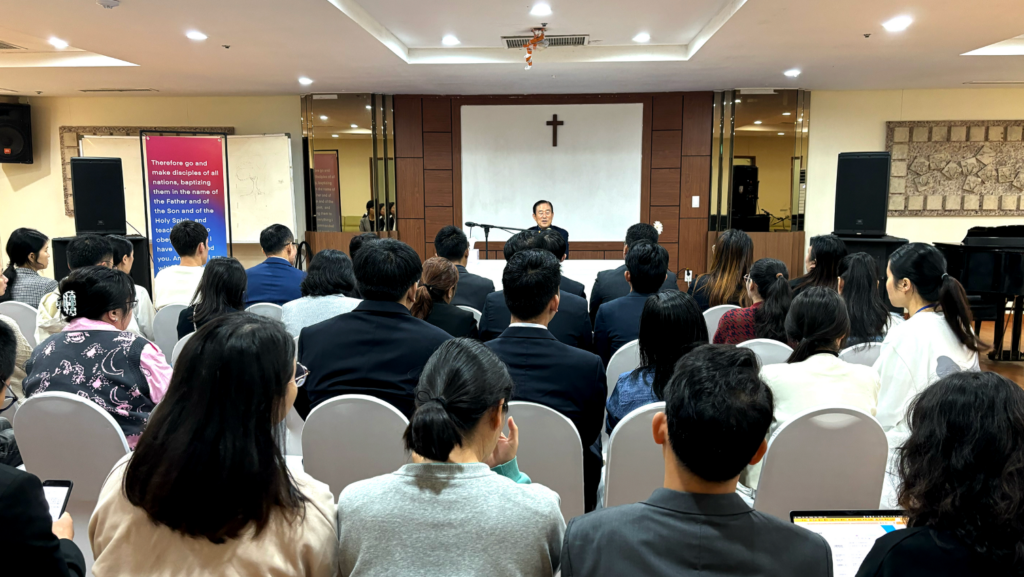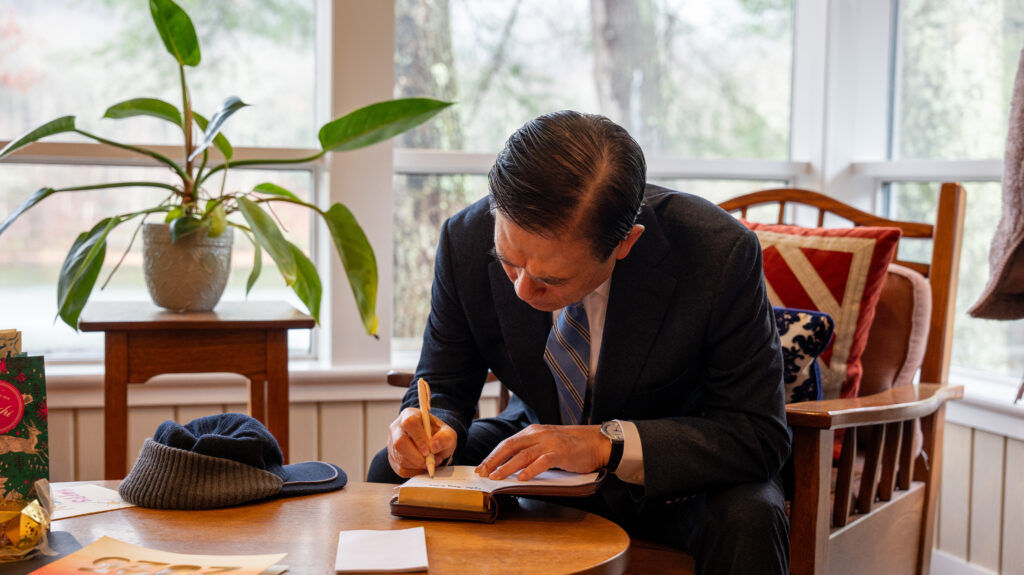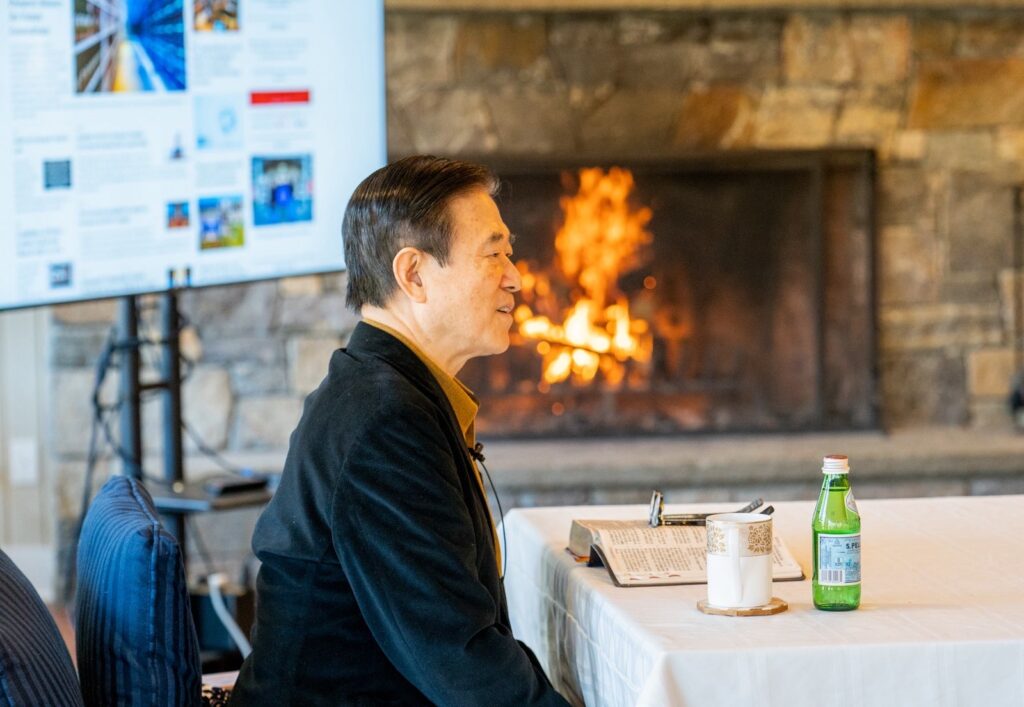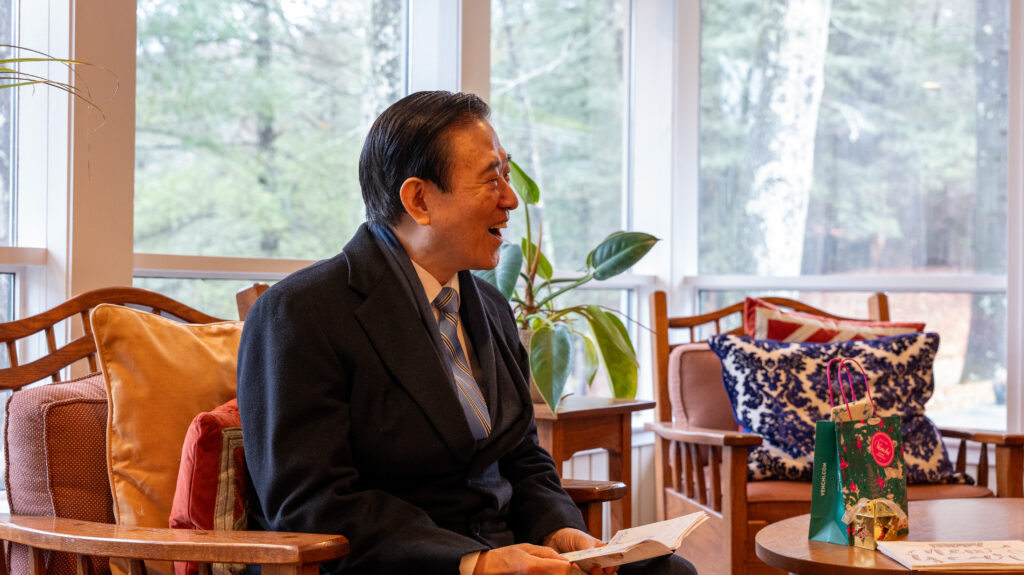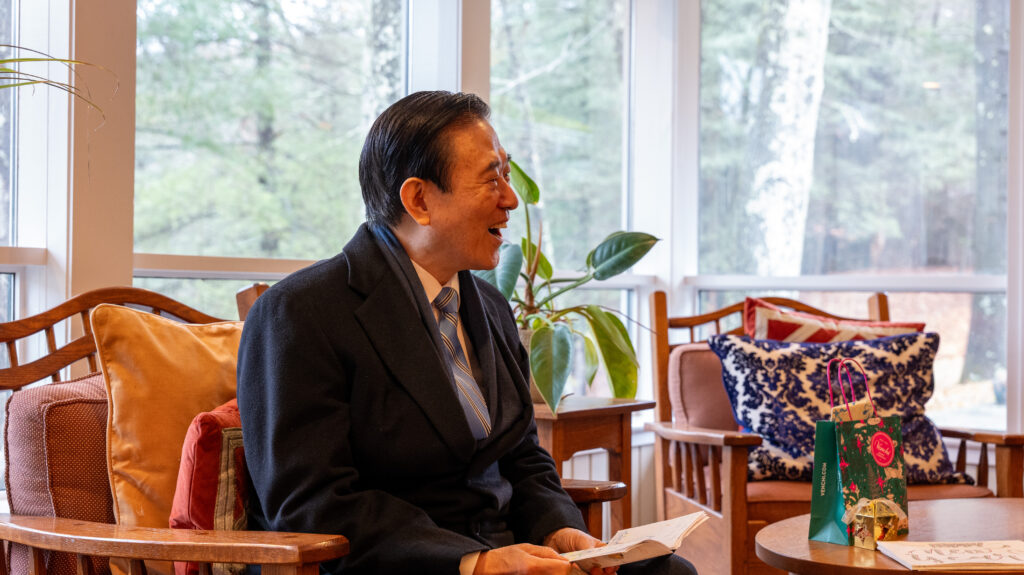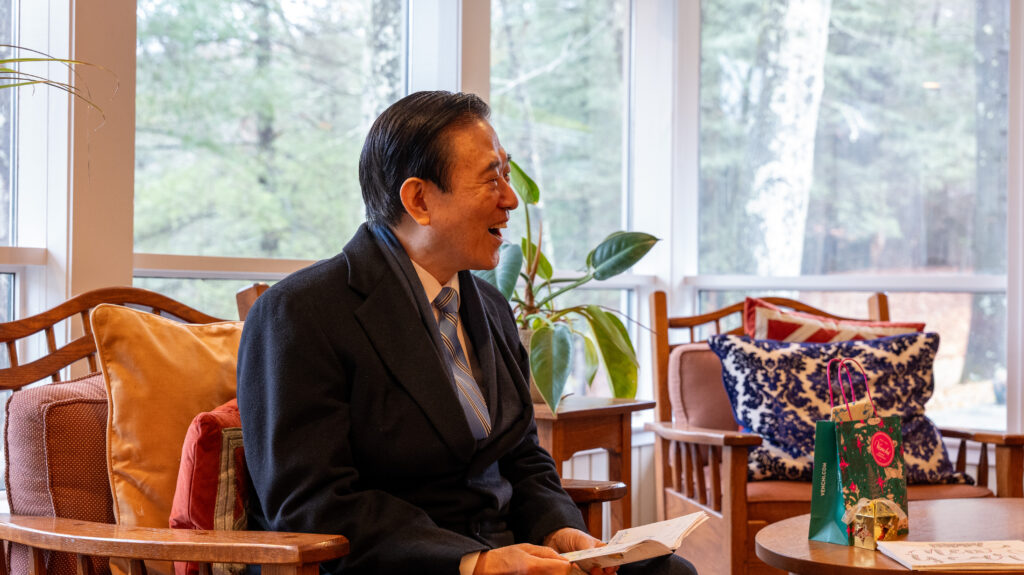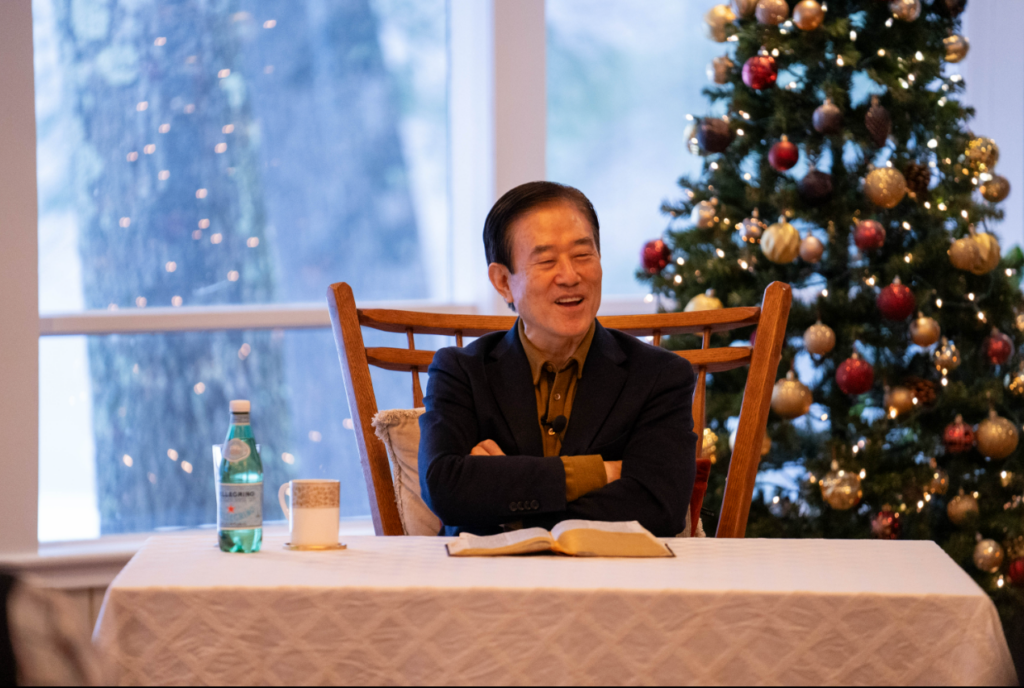
아래 글은 장재형(장다윗)목사의 로마서 3장 1-8절에 대한 설교 원고를 바탕으로 하되, 내용의 주제를 크게 두 갈래로 묶어, 본문의 의미와 신정론적(神正論) 문제 그리고 복음의 본질에 관한 논의를 좀 더 풍성하게 다룹니다. 말씀의 주된 흐름은 바울사도의 논지가 가지는 의의, 그리고 그 논지로부터 파생되는 ‘하나님에 대한 오해와 죄의 책임’이라는 중요한 신학적 주제를 중심으로 진행됩니다. 또한 여기서는 원문 본문에 제시된 내용과 함께, 그 배경에서 설명된 구약과 신약의 구절들, 교회사적·신학적 함의를 다루었습니다.
1. 바울의 논지와 신정론(神正論)의 문제
장재형목사는 로마서 3장 1-8절을 강해하면서, 이 본문이 갖는 핵심 화두가 ‘신정론’의 문제와 깊이 연결되어 있다고 역설한다. 신정론(神正論, Theodicy)이란, 전지전능하시고 선하신 하나님이 어떻게 이 세상에서 일어나는 악(惡)과 죄(罪), 불의(不義) 같은 것들을 허용하실 수 있는가에 대한 변론 혹은 해명이다. 즉, 하나님의 통치와 섭리를 바라볼 때 인간 편에서 생겨나는 모든 의문에 대해, 하나님이 여전히 의로우시며 전혀 잘못이 없으심을 어떻게 ‘변호’할 수 있는가를 다룬다. 그러므로 이 문제가 항상 신앙인들의 마음을 복잡하게 만들고, 동시에 불신자들에게는 하나님을 불신하거나 반신(反神)하게 만드는 대표적 주제로 작동해 왔다.
본문에서 사도 바울은 이스라엘 민족이 가진 특권, 다시 말해 ‘유대인의 나음’이 무엇인가에 대한 반문과 대답을 제시한다. 그동안 그들은 하나님의 특별한 언약과 율법을 부여받아, 모세로부터 계승된 선민사상을 자랑스러워했다. 특히 ‘할례’라는 표징은“하나님의 거룩한 백성”임을 상징하는 강력한 표식이었다. 그러나 바울은 로마서 2장 말미에서 표면적 할례는 진정한 의미의‘하나님의 백성 됨’을 보장하지 못한다고 선언하였다. 율법의 조문을 받았어도 그 율법을 온전히 지키지 못한다면, 그 어떤 이방인보다 더 무거운 정죄를 받을 수 있다고 엄하게 말한다. 이런 충격적인 가르침이 유대인들에게 전해졌을 때, “그렇다면 우리가 누려왔던 모든 특권은 무슨 소용이 있었는가? 할례 자체가 무효가 되었단 말인가?”라는 반발이 즉각적으로 나타나게 된다.
장재형목사는 이 대목에서, 유대인들의 반발은 곧 신정론적 질문과도 맞닿아 있다고 강조한다. “하나님께서 우리를 선택하셨으나, 우리가 죄로 말미암아 율법을 어겼다. 그렇다면 이는 곧 하나님 편의 실패가 아닌가?”라는 식으로, 인간 쪽의 불순종을 하나님께 전가하는 논리가 자리 잡게 된다는 것이다. 인간은 언제나 자신의 죄나 잘못을 변명하려 할 뿐 아니라, 더 나아가 그 책임을 하나님께 돌리고자 하는 경향이 있다. 이는 창세기 3장에서 아담과 하와가 범죄했을 때부터 시작된 ‘죄에 대한 변명과 책임 전가’의 연장선에 있다.
본문 3절에서 바울은 이를 “어떤 자들이 믿지 아니하였으면 어찌하리요, 그 믿지 아니함이 하나님의 미쁘심을 폐하겠느냐?”라는 질문으로 제시한다. 즉 ‘만일 하나님의 언약 백성인 유대인들 중 일부 혹은 다수가 믿음 없고 불순종한다면, 그로 인해 하나님의 신실함이 땅에 떨어지고 무효화되는 것이냐?’라는 물음이다. 장재형목사는 이 질문을 두고, 당시 교회 안팎에서 제기되었을 법한 대표적 신정론적 항의를 상기시킨다. 하나님이 전지전능하시고 택하심에 후회가 없으시다는데, 왜 택한 백성이 불순종으로 심판을 받게 되는가? 결국 하나님께서 택정을 잘못하신 것이냐, 아니면 택하셨음에도 지키지 못한 무능력이냐? 이런 식의 질문들이다.
바울은 여기에 “그럴 수 없느니라”(4절)라고 단호히 선언한다. 그는 하나님이 결코 불의하시거나 실수하시거나 언약에 불성실하신 분이 아니라고 역설한다. 모든 사람이 거짓된다 할지라도 하나님은 참되시다는 말은, 사람 편에서는 아무리 변명이 있을지라도, 하나님의 절대적 진리와 신실함은 조금도 흔들리지 않는다는 뜻이다. 장재형목사는 여기서 “사람은 다 거짓되되, 오직 하나님은 참되시다”라는 구절을 특별히 강조하며, 다윗의 참회시인 시편 51편 4절을 인용한다. 다윗이 밧세바 사건 이후 회개하면서, “내가 주께만 범죄하여 주의 목전에 악을 행하였사오니, 주께서 말씀하실 때에 의로우시다 하고, 주께서 심판하실 때에 순전하시다 하리이다”라고 고백한 대목이다. 이는 인간의 죄악이 아무리 커도 그것이 하나님의 의로우심에 흠을 내지 못한다는 것을 보여준다.
그렇다면 왜 하나님은 유대인들이 불순종해 심판받을 것을 미리 막지 않으셨는가? 혹은 아예 타락 자체를 일어나지 못하게 하지 않으셨는가? 이것이 신정론의 가장 보편적이고 근원적인 질문이다. 장재형목사는 그 해답이 “자유로운 사랑의 관계”에 있다고 설명한다. 하나님이 인간에게 자유의지를 주셨다는 것은, 인간이 스스로 하나님의 사랑에 진심으로 응답하도록 허용하신 것이다. 만일 자유의지가 없으면, 기계적 순종이나 자동적 복종뿐이 될 것이다. 그러나 사랑의 진정성은 강제나 프로그래밍으로는 결코 충족되지 않는다.
여기에 더해, 어떤 사람들은 “인간의 타락이 하나님 뜻이라면, 그것은 하나님께서 악을 계획하신 것이 아닌가?”라고 반문한다. 혹은 “유다가 예수님을 배신하지 않았다면 십자가 구원이 어떻게 이루어졌겠는가? 결국 유다는 하나님의 구원 역사에 협력한 공로자가 아닌가?”라고 묻기도 한다. 장재형목사는 이와 같은 궁극적 질문에 대해 바울이 제시하는 논리를 소개한다. 특히 7-8절에서 바울이 말하듯, “나의 거짓말로 하나님의 참되심이 더 풍성해졌다면, 어찌 내가 죄인처럼 심판을 받으리요?”라는 질문에 대해 바울은 “그러면 선을 이루기 위해 악을 행하자고 하겠느냐? 결코 그럴 수 없느니라!”고 선언한다.
이 구절의 진의를 살펴보면, 만약 하나님께서 “인간의 악함을 미리 계획”하여 그 악을 통해 선을 이루시는 분이라면, 악행을 일삼는 사람은 오히려 ‘하나님의 뜻을 성취하기 위해’ 도구로 쓰임 받는 셈이 되고, 심지어 그것을 자랑할 수도 있을 것이다. 하지만 바울은 그런 궤변을 받아들이지 않는다. 사람들은 그 어떤 방식으로도 죄악에 대해 책임을 면하거나, 죄의 기원을 하나님께 전가할 수 없다는 말이다.
장재형목사는 이 점을 창세기 요셉의 이야기를 통해 좀 더 확장해 설명한다. 요셉은 형들에게 미움을 받아 구덩이에 던져지고, 결국 애굽(이집트)에 종으로 팔려가는 극심한 고통의 시간을 통과한다. 형들은 명백히 “악한 마음”으로 동생을 팔아넘겼다. 이는 절대로 선한 행동이나 타락 전제의 계획이 아니다. 그러나 하나님은 그 악함의 한복판에서도 요셉을 붙드시고, 결국 이집트의 총리 자리까지 올려놓으심으로써 훗날 많은 민족을 기근에서 구원하게 하셨다. 그 일이 있은 뒤, 형들이 요셉 앞에서 두려워 벌벌 떨자 요셉은 이렇게 고백한다. “당신들은 나를 해하려 했으나, 하나님은 그것을 선으로 바꾸사 오늘과 같이 많은 백성의 생명을 구원하게 하셨나이다”(창 50:20).
이처럼 하나님은 ‘인간의 악을 선으로 바꾸시는 분’이지, ‘악 자체를 계획하시는 분’이 아니다. 하나님의 주권은 악에 굴복하지 않고 오히려 악을 선으로 변화시키실 만큼 크고도 전능하시다. 그 사실이 곧, 신정론에 대한 답변이기도 하다. 결국 인간 편에서의 타락과 악은 자유의지를 남용한 결과이며, 그것을 선한 결과로 변화시키시는 분은 어디까지나 하나님이다. 그러나 “타락이 하나님의 뜻”이라고 역설하거나, “악을 통하지 않고서는 선이 드러날 수 없었다”라는 결론에 이르는 것은, 바울이 극구 경계하는 오류이며 불경이다.
장재형목사는 로마 교회 안팎의 유대인들을 상대로 바울이 제기한 이 논지에 주목하라고 촉구한다. 바울 자신도 한때는 율법에 대한 열심에서 예수 그리스도를 핍박하던 자였다. 그러나 그가 그리스도를 만난 뒤, “모든 것이 변했다.” 율법이 가진 참 의미와, 인간의 죄를 대속하기 위해 스스로를 내어주신 그리스도의 십자가가 어떤 의미를 지니는지 깨닫게 된 것이다. 그 사랑의 관점에서 보면, 인간이 죄짓는 모든 장면은 결코 하나님의 본래 뜻이 아니며, 하나님께서 강제로 계획해 놓으신 것도 아니다. 인간의 불순종은 오직 인간 편의 책임이다. 하나님은 끝까지 그 사랑으로 인간의 구원을 갈망하시고, 회복을 위해 스스로 희생하시는 분이다.
결론적으로 1~8절에서 바울이 펼치는 문답 형태의 논의는, “유대인의 실패로 인해 하나님의 신실함마저 깨지느냐?” “악을 통해 선을 드러내신다면, 결국 악도 필요하다는 것이냐?”라는 질문에 대해 “결코 그럴 수 없다!”라고 말하는 것이다. 하나님은 언제나 신실하시고 의로우시며, 죄와 악은 전적으로 인간에게 책임이 있고, 그럼에도 불구하고 하나님은 인간의 악마저 선으로 바꾸실 만큼 위대하시다는 것이다. 유대인들은 이러한 메시지를 받고서, 그동안 자신들이 율법을 받은 특권을 자랑만 하던 태도를 돌아봐야 했다. 그리고 정말 하나님의 뜻대로 살아가지 못한 부분, 곧 자유를 하나님께 순복하여 사랑으로 순종하지 못한 부분에 대해 깊이 회개하고 돌이켜야 했다.
신정론적 답변이 바로 여기에 놓인다. “하나님께서 왜 악인을 빨리 심판하지 않으시는가?” “왜 역사가 이렇게 길게 이어지도록 죄가 판치게 허용하시는가?” 같은 질문도 결국 인간 편의 시각에서 하나님께 책임을 돌리는 것이다. 장재형목사는 바울의 말을 통해, 우리의 신앙은 “그럴 수 없느니라”라는 단호한 대답을 하나님을 변명하기 위한 방어 논리가 아니라, 하나님이 사랑과 공의로 충만하신 분임을 확신하는 고백으로 받아들여야 한다고 정리한다.
즉, “인간이 하나님의 선민이 되지 못했다면, 그 책임은 누구에게 있는가? 하나님의 탓인가?” 결코 아니라는 것이다. 우리는 오히려 자신을 돌아봐야 하며, “내가 믿음 없고, 내가 불순종하고, 내가 말씀에 불의했구나”라고 회개해야 한다. 그렇지 않고 하나님께 “당신이 막지 않았지 않느냐” “당신이 예정하셨지 않았느냐”라는 식으로 따지기 시작하면, 그 누구도 바른 길에 이를 수 없다. 이는 사랑의 하나님에 대한 중대한 오해일 뿐 아니라, 바울이 소리 높여 거부했던 악용된 예정론적 사유, 혹은 왜곡된 신정론이라고 할 수 있다.
2. 복음의 본질, ‘마음에 할례’를 받은 자와 참된 신앙
위에서 논의한 신정론의 문제와 더불어, 장재형목사는 로마서 3장 1-8절이 내포하는 또 하나의 중요한 주제인 ‘복음의 본질’에 대해서도 주목한다. 바울은 앞선 로마서 2장 28-29절에서 “표면적 유대인이 유대인이 아니요, 표면적 육신의 할례가 할례가 아니다”라고 선언했다. 그리고 이어서 “이면적 유대인이 유대인이며, 할례는 마음에 할지니 영에 있고 율법 조문에 있지 아니한 것이라”라고 말한다. 이 파격적인 주장은 선민사상을 뿌리부터 흔드는 것이었다.
장재형목사는, 바울의 이러한 선언이 단순히 ‘할례 무용론’을 말하는 것이 아니라, “진정한 할례, 참된 믿음과 순종은 어디서부터 시작되는가?”를 밝히는 말씀이라고 설명한다. 유대인들은 할례를 받음으로써 아브라함의 언약을 계승하고, 자신들이 ‘언약 백성’임을 공식화해 왔다. 그러나 바울은 “만일 율법을 범하면 네 할례가 무할례가 된다”(롬2:25)고 경고한다. 즉, 율법을 지키지 않는다면, 표피를 베었는지 여부와 상관없이 진정한 하나님의 백성이라 할 수 없다는 것이다.
그렇다고 해서 할례가 전혀 가치가 없다는 말은 아니다. 로마서 3장 1-2절에서 바울은 분명하게 “유대인의 나음이 무엇이며 할례의 유익이 무엇이냐? 범사에 많으니 첫째는 저희가 하나님의 말씀을 맡았음이니라”라고 말한다. 장재형목사는 이것을 당시 교회 상황에 비추어, “그리스도인이 세례를 받는 것 역시 마찬가지”라고 해석한다. 세례 자체가 무익한 의식이 아니라, 본래 그리스도인의 믿음을 공적으로 고백하고 ‘내가 주님과 함께 장사되고, 주와 함께 살아났다’는 것을 선포하는 중요한 예식이다. 문제는 ‘겉모습만 남은 의식’으로 전락했을 때다.
바울이 9장 이후에서 다시 언급하는 대로, 유대인들은 하나님께 ‘양자됨(롬9:4)’과 ‘언약들(롬9:4)’을 받았고, ‘율법(롬9:4)’과‘약속들(롬9:4)’을 위탁받았으며, 그리스도도 그 혈통으로부터 오셨다(롬9:5). 이것은 엄청난 특권이다. 마찬가지로 오늘날 교회 안에서 세례를 받은 사람, 혹은 기독교 가정에서 태어나 자연스럽게 믿음을 생활화한 사람들은, 대단히 중요한 은혜의 조건을 선물로 받고 있는 셈이다. 그렇다면 과연 그 조건이 ‘내 실천 없는 자랑’으로만 머물 것인가, 아니면 실제로 내 삶을 하나님께 드리고 “마음에 할례”를 받는 이면적 신앙이 될 것인가?
장재형목사는 구약의 예언서 예레미야 31장 33절을 상기시킨다. “나 여호와가 말하노라, 내가 나의 법을 그들의 속에 두며 그들의 마음에 기록하여… 나는 그들의 하나님이 되고 그들은 내 백성이 될 것이라.” 이것이야말로 하나님께서 진정 원하시는 언약 관계라는 것이다. 표피에 새겨진 할례가 아니라 마음 깊숙이 새겨진 할례, 곧 표면적 행위를 뛰어넘어 영 안에서의 순종을 강조한다. 예레미야나 에스겔 같은 예언자들 또한 “너희 마음의 굳은 돌을 제하고, 부드러운 마음을 줄 것이며, 너희에게 새 영을 부어주리라”(겔36:26)는 메시지를 전했다.
바울은 갈라디아서, 빌립보서, 골로새서 등에서 이 문제를 반복적으로 다룬다. 갈라디아 교회 내부에서는 ‘이방인 그리스도인도 반드시 육체의 할례를 받아야만 진짜 구원을 받을 수 있다’고 주장하는 유대인 출신 형제들이 있었다. 바울은 이들을 대단히 강하게 비판하며, “손할례당을 삼가라”(빌3:2)라고 표현했다. 그리고 “하나님의 성령으로 봉사하며, 그리스도 예수로 자랑하고, 육체를 신뢰하지 아니하는 우리가 곧 할례당”이라(빌3:3)고 선언함으로써, ‘외적인 할례’만을 고집하는 이들을 되레 “개들을 삼가라”는 극단적 표현으로 경고한다.
골로새서 2장 11절 이하에서도, 그리스도 안에서 받은 ‘손으로 하지 아니한 할례’의 중요성을 밝히면서, 육체적 의식이 아니라“세례로 그리스도와 함께 장사되고… 하나님의 역사를 믿음으로 말미암아 그 안에서 함께 일으킴을 받았다”(골2:12)는 점을 강조한다. 이는 신학적으로 말하자면, 그리스도와 함께 죽고 그리스도와 함께 사는 ‘연합’(Union with Christ)의 진리를 가리킨다. 장재형목사는 여기서, “보이는 표징(sign)은 마음의 변화를 표현하는 하나의 상징이 되어야 한다. 그 표징 자체가 모든 것을 결정하지는 않는다”고 설명한다.
이 논리를 유대인들에게 직접 적용한 것이 로마서 2장에서 3장으로 이어지는 맥락이다. 바울은 “겉으로 한 할례만으로 선민이라 자랑하지 말라. 그것은 본질이 아니다. 마음의 진정한 회개와 믿음이 있을 때, 그 할례가 의미가 되고 효력을 갖는다.”라고 선언하였다. 그리고 “만일 율법을 제대로 지키지 않고 하나님의 이름을 욕되게 한다면, 너희의 할례는 무할례가 될 수 있고, 반대로 율법의 규례를 지키는 무할례자는 할례 없는 상태에서도 하나님 앞에 의롭다 함을 받을 것”이라고 경고했다(롬2:25-27 참조).
이 충격적인 가르침에, ‘그렇다면 도대체 우리가 할례받고 율법을 전승해온 것은 아무 소용이 없단 말인가?’라는 반응이 나올 수밖에 없었다. 바울은 여기에 “그렇지 않다. 너희가 하나님의 말씀을 맡았으므로 유대인의 나음이 분명 있다”(롬3:2)고 대답한다. 하지만 그 나음과 특권이 ‘네가 본질에 충실할 때’만 참으로 의미가 있으며, 만약 그 특권을 지키지 않고 도리어 하나님의 이름을 더럽히는 불신앙을 드러낸다면, 그 특권은 오히려 더 큰 심판의 근거가 될 수 있음을 지적한다.
장재형목사는 이를 오늘날 교회 상황에 동일하게 적용해 보라고 제안한다. 세례 혹은 오랜 신앙 경력, 교회 직분, 신학 지식 등은 참으로 귀하고 소중한 은혜의 증거다. 그러나 그것이 외적 자랑거리에 불과하다면 무슨 의미가 있겠는가? 바울이 지적한 대로, 어떤 이방인(오늘날로 치면 믿지 않는 이들)이라도 ‘선한 양심과 도덕적 삶’을 통해, 형식상 그리스도인이라고 말하는 사람을 도리어 부끄럽게 만들 수 있다. 이것이 본문에서 말하는, “무할례자가 율법의 규례를 지키면 도리어 너희를 정죄하리라”는 경고다(롬2:27).
따라서 복음의 본질은 어디에 있는가? 바울은 다른 서신들에서 “의인은 믿음으로 말미암아 살리라”는 명제를 되풀이한다(롬1:17, 갈3:11 등 참조). 즉, 우리의 구원은 인간의 공로나 외적인 형식으로 이루어지는 것이 결코 아니며, 오직 그리스도의 십자가 대속과 부활, 그리고 이를 진실로 믿고 마음에 받아들이는 믿음을 통해 은혜로 주어지는 것이다(엡2:8-9). 그럼에도 그것이‘육체적 표징의 완전한 무가치’를 뜻하진 않는다. 장재형목사는 “표징이란 마음에 있는 실체를 드러내는 외적 사인(sign)이며, 하나님과 교회 공동체 앞에서 내가 어떤 상태인지를 확인시키는 예식”이라고 설명한다.
하지만 이 표징(할례나 세례)이 곧 본질은 아니다. 본질은 ‘마음의 한례’, 곧 성령을 통한 내면의 변화와 참된 회개, 그리고 하나님을 사랑하고 이웃을 사랑하는 그리스도의 삶을 닮아가려는 순종이다. 예수님이 직접 이 땅에 오셔서 보여주신 사랑과 겸손, 섬김, 은혜의 모습은 신앙생활에서 우리가 가장 우선순위로 두어야 할 열매다. 장재형목사는 “할례 혹은 세례가 구원을 보장한다고 착각하거나, 교회에서 충성 봉사한 이력이 많다고 해서 의롭다 함을 받는 것이 아니다”라고 거듭 강조한다.
아울러, 바울이 로마서 3장에서 언급하는 또 다른 쟁점인 ‘하나님의 의’와 ‘인간의 불의’를 대조하는 이야기는, 곧 “우리의 불의가 오히려 하나님의 의를 드러낸다면, 이것도 결과적으로는 선이 아니냐?”라는 궤변을 초래한다. “선을 이루기 위해 악을 행하자”는 식의 무모하고 극단적인 논리 말이다(롬3:8). 바울은 이를 “정죄 받는 것이 옳으니라”라고 단숨에 잘라버린다. 우리가 죄를 짓고도 “결과적으로 하나님 영광이 더 드러났으니 내 죄가 오히려 선을 가져왔지 않느냐?”라고 말하는 것은, 복음의 본질을 왜곡하는 위험천만한 발상이다.
결국 바울이 로마서에서 드러내고자 하는 핵심은, “구원은 내게서 시작된 것이 전혀 아니며, 오직 그리스도의 십자가 희생으로부터 시작되었고, 내가 이를 믿음으로 받아들임으로써 성령의 역사가 내 안에 임해, 마음의 한례로 거듭나게 되는 것”이라는 진리다. 장재형목사는 이러한 가르침이 모든 율법적 형식주의를 깨뜨리며, 동시에 ‘신정론의 문제’로부터 하나님을 변호하는데도 강력한 논거가 된다고 역설한다. 왜냐하면, 하나님은 우리에게 절대 악을 계획하시지 않으시고, 우리를 철저히 자유로운 존재로 세우셨으며, 그 자유를 범해 죄 가운데 빠진 우리를 끝내 구원하시고자 십자가의 길을 택하셨기 때문이다.
로마서 3장 1-8절은 이러한 흐름 속에서, “유대인의 특권이 무엇이냐?” “그들이 믿지 않았다고 해서 하나님이 실패하셨느냐?” “우리의 불의가 하나님의 의를 드러낸다면 죄도 유익한 것이냐?”라는 질문들을 통해, 하나님의 의로우심과 신실하심, 그리고 인간 편의 불신과 무지가 얼마나 허망한가를 보여준다. 장재형목사는 “결코 그럴 수 없느니라!”라는 바울의 단호한 결론을 거듭 해설하며, 오늘날 교회 안에서도 우리가 형식만 붙드는 표면적 종교생활을 반성하고, 참된 마음의 한례를 받아야 함을 강조한다.
신정론적 측면에서 보면, ‘왜 하나님은 악이 존재하도록 내버려 두셨는가?’라는 질문은 결국 “왜 하나님은 나를 꼭두각시 인형으로 만들지 않으셨는가?”라는 물음과 직결된다. 그러나 자유 없는 사랑은 이미 사랑이 아니다. 하나님이 우리의 자발적 응답을 원하셨다는 사실이, 전체 구원계획에서 너무나 중요하다. 그토록 인간을 높이셨지만, 인간은 스스로 죄를 택했으며, 이 책임에서 결코 벗어날 수 없다. 동시에 그 죄의 값을 예수님이 십자가에서 대신 치르심으로써, 우리의 타락이 하나님의 사랑과 주권을 부정하거나 무너뜨리지 못하게 하셨다. 이는 오히려 사랑의 하나님이 얼마나 위대한 분이신지, ‘죄와 악마저 선으로 뒤바꾸시는 힘’을 소유하셨음을 드러낸다.
결국 우리는 “선택받았지만 그 선택에 합당하게 살지 않은” 유대인들, 혹은 “복음을 표면적으로만 받아들이고 행위로 증명하지 못하는” 현대의 형식적 신앙인의 문제를 똑같이 마주한다. 이를 명백하게 지적하는 바울의 말씀, 그리고 이를 해석하고 강해하는 장재형목사의 설교는, 오늘 우리에게 회개와 결단을 촉구한다. 마음의 한례 없이 교회 의식만 따라가는 믿음은 결코 ‘참된 복음 생활’이 될 수 없으며, 하나님께 “아, 결국 다 하나님의 계획이었으니 어쩔 수 없었다”라고 변명하는 것은 더더욱 안 된다는 엄중한 메시지다.
장재형목사는 이를 ‘복음의 본질 회복’이라 요약한다. 이 복음의 본질은, 인간의 죄와 불순종이 오직 인간 편의 잘못에서 비롯되었다고 선언한다. 그리고 그럼에도 불구하고 하나님은 한없이 신실하셔서, 죄인을 회복시키기 위해 십자가에 자신을 내어주셨으며, 성령으로 말미암아 마음의 변화를 일으키셔서, 누구든지 진실로 회개하고 믿으면 구원에 이르게 하신다는 것이다. 우리가 이 은혜를 받았다면, 그 은혜에 합당한 삶을 살아야 한다. 그것이 바로 “표면적 할례가 아닌 마음에 할례받은 자”의 존재 방식이다.
결국, 로마서 3장 1-8절을 통해 드러나는 큰 교훈은 다음과 같이 요약할 수 있다. 첫째, 사람은 거짓되고 죄악된 상태에 머무를 때 하나님을 쉽게 오해하고, 죄의 책임을 하나님께 전가하고자 한다. 이는 창세기로부터 시작된 오래된 인간의 죄성(罪性)이다. 둘째, 그럼에도 하나님은 당신의 신실하심을 결코 버리지 않으신다. 어느 누구도 그 신실함을 흔들 수 없으며, 인간의 불신으로 인해 하나님의 계획이 무너지지도 않는다. 셋째, 표면적 할례나 외적 의식, 혹은 오랜 신앙생활 경력만으로 자신의 의를 삼으면, 바울이 경고한 유대인들과 똑같은 잘못을 범할 수 있다. 넷째, 참된 복음은 “마음으로 믿어 의에 이르고, 입으로 시인하여 구원에 이르는”(롬10:10) 것이며, 이는 ‘손으로 하지 않는 할례’ 즉, 성령을 통한 내적 변화와 결단을 수반한다. 다섯째, 악이 더해질수록 하나님의 영광이 드러난다는 식의 어리석은 궤변은 절대로 용납될 수 없다. 하나님은 인간의 악을 선으로 바꾸실 수 있으나, 인간에게 악의 책임이 면제되는 것은 아니다.
장재형목사는 이 메시지가 2,000년 전 유대인들에게 주어진 말씀인 동시에, 오늘날 모든 그리스도인에게도 변함없이 적용되는 진리임을 상기시킨다. 그리고 우리 안에 있는 ‘하나님에 대한 오해’를 깨뜨려야만, 바울이 로마서 전반에서 말하는 ‘복음에 의한 자유’(롬8:2)로 들어갈 수 있다고 말한다. 우리는 신정론적 의문, 즉 “하나님은 왜 이 지경이 되도록 두셨나?”라는 질문을 하기 전에, “나는 과연 마음에 참된 할례를 받았는가?” “나는 정말 믿음으로 살아가는가?”라고 먼저 자문해야 한다.
만약 “나는 틀림없이 세례도 받았고, 교회 몇십 년 다녔으니 안전하다”라며 스스로를 안주시킨다면, 유대인들이 바울의 책망 앞에서 보였던 항변(“그러면 우리에게 무슨 유익이 있느냐?”)과 다를 바 없다. 그리스도인의 명예는 하나님의 이름을 높이는 삶으로 입증된다. 믿지 않는 이들이 우리의 삶을 보고 “과연 너희가 말하는 복음이 참이로구나”라고 고백하게 된다면, 진정한 할례를 받은 하나님의 백성이 되는 것이다. 그러나 믿지 않는 이들이 교회 안의 위선과 죄악을 보고, 오히려 “너희 때문에 하나님의 이름이 더럽힘을 받는다”고 말하게 된다면, 겉으로만 할례를 받은 유대인들보다 나을 바가 없다.
그러므로, 이 로마서 3장 1-8절에 대한 강해 전체를 통해, 장재형목사가 거듭 역설하는 바는 명확하다. “마음에 할례를 받으라!”는 것이다. 그럼으로써 “사람은 다 거짓되되, 오직 하나님은 참되시다”라는 바울의 고백을 내 영혼이 깊이 공감할 수 있어야 한다. 내가 죄에서 떠나지 못한 채 ‘하나님의 전능하심, 하나님의 예정하심’ 같은 단어들만 앞세우며 변명한다면, 결국 나 스스로 삶의 변화 없이 신앙의 본질을 외면하고 있을 뿐이다.
나아가, 이렇게 마음으로부터의 회개와 믿음이 없다면, 소위 ‘신정론 문제’에 대한 모든 해답은 허공 속 이론에 머무른다. “하나님이 다 하신 일”이라고만 치부하거나, “하나님의 섭리는 내가 이해할 수 없다”는 식으로 말을 끝맺는다 한들, 실제 삶에서 하나님을 뜨겁게 신뢰하거나 복음을 기쁘게 전하지는 못한다. 그러나 바울과 같이, “내가 죄인 중의 괴수였지만, 예수 그리스도의 은혜로 말미암아 의롭다 하심을 받았다”는 감사와 감격이 살아 있는 자는, 신정론의 그 어떤 질문도 자기 변명에 쓰지 않는다. 오히려 겸손히 자신을 낮추고, 하나님을 영화롭게 하며, 악을 피하고 선을 선택함으로써, 인간에게 허락된 ‘자유의 위대함’을 감사한다.
결국 바울이 ‘유대인의 나음과 불신앙’을 이야기하며 이 신정론적 화두를 던지고, “그럴 수 없느니라!”라는 강력한 경고와 선언을 이어가는 것은, 오늘날 우리에게도 동일하다. 어떤 식으로든 죄의 기원을 하나님께 돌리려는 시도를 멈춰야 하고, 죄를 더하여 하나님의 은혜를 높이려는 이율배반적 발상도 경계해야 한다. 그리스도 안에서 받은 구원의 은혜가 참되다는 사실은, 우리의 삶이 ‘마음의 한례’를 통해 변화되었음을 보여줄 때 드러난다.
본문의 배경과 신정론의 문제, 그리고 ‘마음에 할례’를 받은 자가 되어야 한다는 복음의 본질을 중심으로 구약과 신약, 그리고 초대교회의 갈등 상황까지 더 폭넓게 언급해 보았다. 결론적으로, 우리가 이 말씀 앞에서 기억해야 할 중심 진리는 명료하다. “사람은 다 거짓되되 하나님은 참되시고, 그 하나님의 사랑은 우리의 자유의지 남용으로 인한 타락조차도 선으로 바꾸실 만큼 크다. 그러나 그 사실이 결코 인간의 죄를 정당화하지 못한다.” 따라서 우리는 겉모습만으로는 아무것도 보장받지 못한다는 사실을 깨닫고, 진심으로 회개하고 순종하는 ‘이면적 신앙인’으로 거듭나야 함을 배운다. 그리고 그것이 바울이 말하는 “그럴 수 없느니라!”라는 단호한 어조 속에 담긴 진실이자, 장재형목사가 로마서 3장 1-8절을 통해 전달하고자 한 핵심 메시지다.
www.davidjang.org

